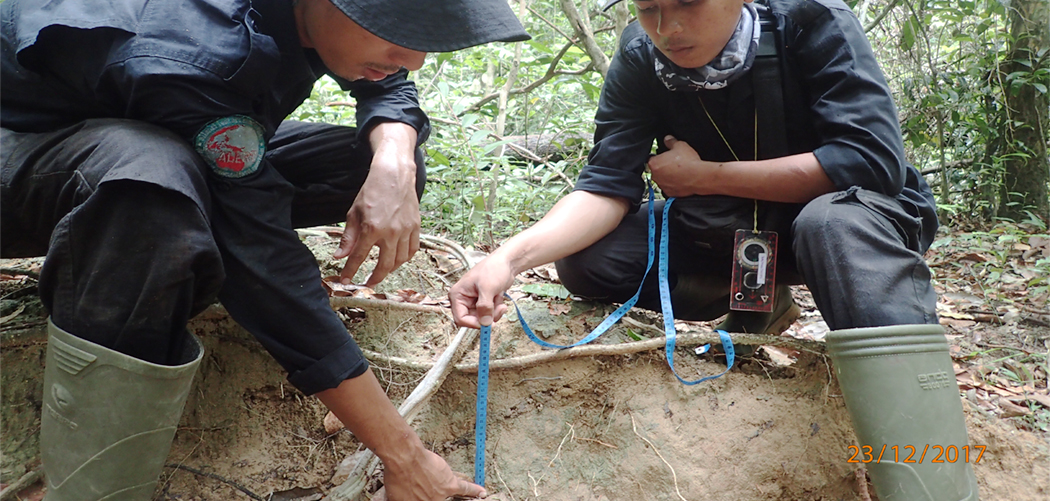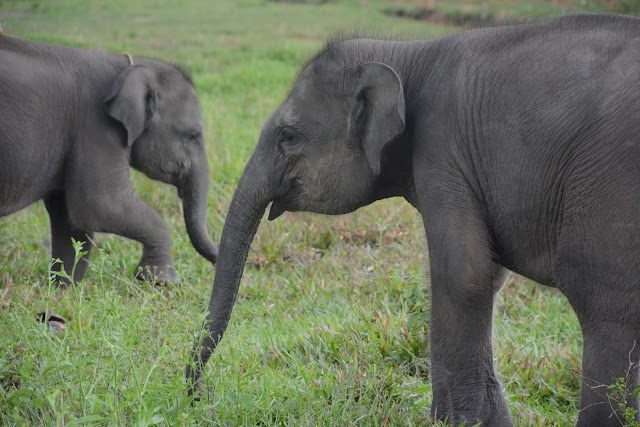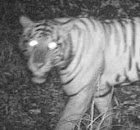Sumatran rhinoceros / Dicerorhinus sumatrensis
the smallest of the living rhinoceroses and the only Asian rhino with two horns

Training Trajectory Survey
Sumatran Rhino Emergency Action Plan

The Rhino Monitoring Unit
Monitoring of sumatran rhino by camera traps

The Rhino Monitoring Unit
Monitoring of sumatran rhino by camera trap

The tour guide training
The tour guide training of special interest tourism

The tour guide training
The tour guide training of special interest tourism

The tour guide training
The tour guide training of special interest tourism

Monitoring of megafauna by camera trap
Big mammals recorded by camera traps

The Rhino Monitoring Unit
Determining the location of camera trap is important to get optimal data

The Rhino Monitoring Unit
Determining the location of camera trap is important to get optimal data

Raising Community Awareness
Community awareness is one of the keys to conservation

Raising Community Awareness
Community awareness is one of the keys to conservation

The Special Elephant, Erin
She lost part of her trunk due to snares

Black marsh turtle/Siebenrockiella crassicollis
a freshwater turtle endemic Southeast Asia. the turtle has been classified as Vulnerable by the IUCN.

Habitat Degradation
most of WKNP was degraded by vegetation of imperata, which is potential causing forest fires

Reforestation Programs
Recovery of degraded habitat for supports species conservation in Way Kambas landscape

Camp Reforestation
Forest ranger will stay in camp and monitor the reforestation area

Wildlife Ecotourism
feel the amazing of Sumatran forest canopy in Cocoon Wildlife Observation

Raising Community Awareness
Community awareness is one of the keys to conservation

Raising Community Awareness
Community awareness is one of the keys to conservation

conflict mitigation
Together with community of buffer village, we are preparing materials for building elephant barrier

conflict mitigation
Together with community of buffer village, we are building the early detection tool for elephant mitigation conflict

conflict mitigation
Together with community of buffer village, we are building the early detection tool for elephant mitigation conflict

Evaluation Program
ALeRT's Program Coordinator presented the results of the rhino occupation survey in WKNP

Evaluation Program
President of ALeRT- Indonesia, Marcellus Adi CTR

Wildlife Traps
the traps has been threatening wildlife in Way Kambas National Park

Elephant Protective Canals
Keeping health for young elephants in Elephant Conservation Centre WKNP

Southern Cross University Volunteering Program
Planting action with local community in Susukan Baru Reforestation

Southern Cross University Volunteering Program
Planting action with local community in Susukan Baru Reforestation

Southern Cross University Volunteering Program
Learning and exchange language with children from Desa Braja Harjosari

Southern Cross University Volunteering Program
Planting paddy in Desa Braja Harjosari

Habitat Reforestation
in RPTN Susukan Baru, Way Kambas National Park

Rhino Monitoring Unit
Sumatran Rhino Occupancy Survey

Rhino Monitoring Unit
Sumatran Rhino Occupancy Survey

Rhino Monitoring Unit
Sumatran Rhino Occupancy Survey

Rhino Monitoring Unit
Monitoring of Sumatran Rhino by Camera Trap

Savannah Nightjar / Caprimulgus affinis
Common nightjar of lowlands, from dry open coastal areas to large cities

Barn owl / Tyto alba
An uncommon bird in the lowlands of Sumatra, Java, and Bali, up to 800 m.

Javan Frogmouth / Batrachostomus javensis
Recorded in lowlands from most parts, and occasional on hill forests


 AleRT in collaboration
with WKNP and the Save Indonesia Endangered Species (SIES) support partner,
already excavates 2.8 hectare protective canal in ETC. The canal is 2x2 meters,
built surrounded 20 hectares of land that will be elephant food farm. A water
reservoir (that call Embung) between the canal area at large 40 x 20 meters and
depth 6 meters has been made. The resevoir function is to hold water in the
rain season and to be source of water during the dry season. This activity has
began in early November 2017 and finished on 26 December 2017.
AleRT in collaboration
with WKNP and the Save Indonesia Endangered Species (SIES) support partner,
already excavates 2.8 hectare protective canal in ETC. The canal is 2x2 meters,
built surrounded 20 hectares of land that will be elephant food farm. A water
reservoir (that call Embung) between the canal area at large 40 x 20 meters and
depth 6 meters has been made. The resevoir function is to hold water in the
rain season and to be source of water during the dry season. This activity has
began in early November 2017 and finished on 26 December 2017.










































 Enjoy the Way Kambas National Park endangered mega fauna and other rare wildlife species caught in video. Find mother and baby of Sumatran rhino, challenging young male Sumatran tiger, big family of Sumatran elephant, funny Malayan sun-bear and curious Malayan tapir.
Enjoy the Way Kambas National Park endangered mega fauna and other rare wildlife species caught in video. Find mother and baby of Sumatran rhino, challenging young male Sumatran tiger, big family of Sumatran elephant, funny Malayan sun-bear and curious Malayan tapir. It was written by Janos Olah & Attila Simay in Birding Asia magazine, on 2007. Not only the great variety of the otherwise scarce and hard to-come-by species is what makes this national park world-famous, but also the relative ease in finding them. No other place in sumatra that has 4 species of Frogmouth.
It was written by Janos Olah & Attila Simay in Birding Asia magazine, on 2007. Not only the great variety of the otherwise scarce and hard to-come-by species is what makes this national park world-famous, but also the relative ease in finding them. No other place in sumatra that has 4 species of Frogmouth.

0 komentar :
Post a Comment
Berikan saran atau kritik yang membangun untuk website ini
Terimakasih